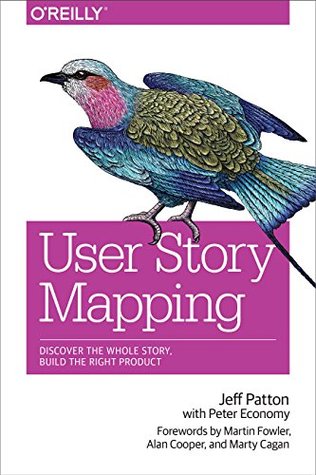More on this book
Community
Kindle Notes & Highlights
by
Jeff Patton
Read between
February 28 - April 26, 2020
Shared documents aren’t shared understanding.
Stories get their name from how they should be used, not what should be written.
The best estimates come from developers who really understand what they’re estimating.
Alistair uses an altitude metaphor where sea level is in the middle, and everything else is either above or below sea level. A sea-level task is one we’d expect to complete before intentionally stopping to do something else. Did you write “Take a shower” in your list of tasks? That’s a sea-level task because you don’t get halfway through your shower and think, Man, this shower is dragging on. I think I’ll grab a cup of coffee and finish this shower later. Alistair calls these functional-level tasks and annotates them with a little ocean wave. But I’ll just call them tasks. Tasks like “Take a
...more
Maps are organized left-to-right using a narrative flow: the order in which you’d tell the story.
It’s her last card, and might very well be the last card in existence, so that makes it a historical artifact.
One of the luminaries in the Agile development community is my aforementioned friend, Alistair Cockburn, who once told me, “For every story you write, you need to put three into your backlog of stories.” I asked him why, and he said, “You just do.” I asked, “What should I write on the other two?” “It doesn’t matter what you write.” “What do you mean?” I asked, “I have to write something on them!” Alistair replied, “Well, if you have to write something on them, then write what you want on the first card, and on the second card write ‘Fix the first card.’ Then on the third card, write ‘Fix the
...more
Validated learning over working software (or comprehensive documentation)
very little of what we build is successful or has the real impact we hope for. I figure around 20 percent max. Then there is another 20 percent of things we do that are genuine failures—solutions that result in a negative impact. I’ve seen a variety of organizations that release a new, better version of their website and see sales decrease, or release a new version of their product that customers try and then demand the old version back. That’s the kind of failure I’m talking about. But it’s that 60 percent in the middle, give or take, that is neither success nor failure that’s the big
...more
Empathize, Focus, Ideate, Prototype, Test
Here are a few great ways to mess up a design process: Start without framing the business needs and target customer well. This’ll make it hard to prioritize who to focus on, and hard to tell if you’re finding a good solution. Spend a lot of time doing thorough research and making sense of what you’ve learned. You’ll never run out of things to learn—so why stop? Time-boxing might have been a good idea. Don’t spend any time at all talking to people and learning from them. After all, we’ve got a lot of data, and really, our solution ideas are great. We just need to get going on designing them.
...more
This highlight has been truncated due to consecutive passage length restrictions.
Great art is never finished, only abandoned.


